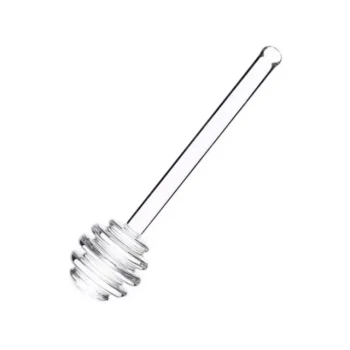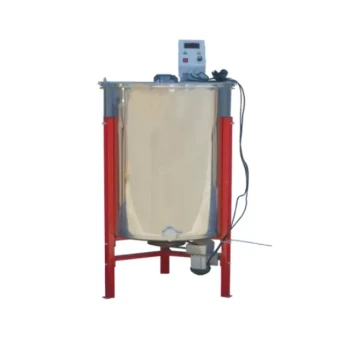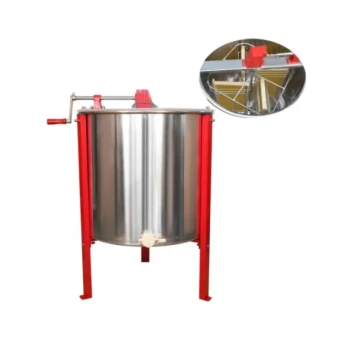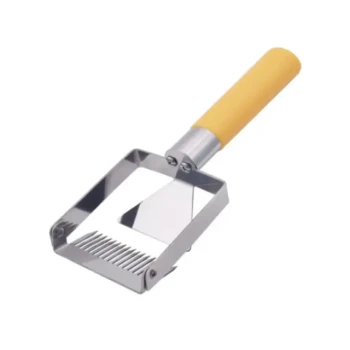At its core, a multi-lane honey stick machine is an automated system designed for high-volume production. Its defining feature is the ability to form, fill, and seal multiple honey sticks simultaneously in parallel "lanes." This design allows for a significant increase in output, with some models featuring up to 20 lanes capable of producing over 1,600 sticks per minute.
The primary advantage of a multi-lane machine isn't just speed, but synchronized efficiency. It transforms honey packaging from a series of steps into a single, continuous, and automated process ideal for large-scale commercial operations.
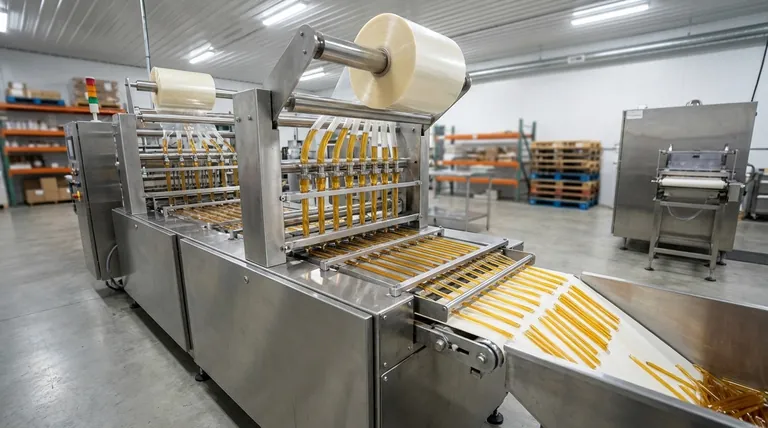
The Core Capabilities of Multi-Lane Machines
A multi-lane machine integrates several processes into one seamless workflow. This synchronization is what enables its impressive output and makes it a cornerstone of industrial honey production.
Simultaneous Production
The "multi-lane" design means the machine creates more than one product per cycle. A twin-lane model produces two sticks at once, while larger versions can handle many more, drastically reducing the time required to package a large batch of honey.
Fully Synchronized Automation
These machines handle the entire packaging process from start to finish. The system automatically forms the stick tubes, precisely fills them with honey, and then securely seals both ends without manual intervention.
High-Volume Output
The combination of multiple lanes and full automation results in extremely high production speeds. This capability is specifically engineered to meet the demands of large-scale producers supplying major distributors and retailers.
How Multi-Lane Machines Compare to Other Options
Understanding the context of other machine types helps clarify where a multi-lane system fits. The primary difference always comes down to the scale of production and the level of automation required.
vs. Semi-Automatic Machines
A semi-automatic machine requires manual operator involvement. Typically, an operator must load the packaging film and manually remove the finished honey sticks. This results in much lower productivity and is best suited for small or medium-sized businesses.
vs. Standard Single-Lane Machines
A standard or single-lane machine automates the process but only produces one stick at a time. While efficient for smaller operations, it cannot match the sheer volume of a multi-lane system.
Understanding the Trade-offs
While powerful, a multi-lane machine is not the right solution for every business. Its capabilities come with specific requirements that must be considered before making an investment.
Significant Space Requirement
Full automation and multiple parallel processing units require a considerable physical footprint. A facility must have adequate space to house the machine and allow for operational access.
Higher Initial Investment
The complexity, speed, and automation of a multi-lane machine mean it represents a significant capital investment compared to smaller, semi-automatic models. Its cost is justified by its high output and reduced labor needs over time.
Key Design Considerations
When evaluating any machine, it's crucial to look beyond speed. Pay close attention to the manufacturing materials, the ease of accessibility for cleaning and maintenance, and the usability of the control panel.
Making the Right Choice for Your Production Scale
Selecting the correct machine is about aligning its capabilities with your specific business goals.
- If your primary focus is small-batch or start-up production: A semi-automatic machine offers a lower entry cost while still improving on manual methods.
- If your primary focus is growing your medium-sized business: A single or twin-lane automatic machine provides a significant boost in efficiency without the industrial scale of a larger system.
- If your primary focus is large-scale industrial supply: A multi-lane honey stick machine is the essential tool for achieving the necessary volume and automation.
Ultimately, the right machine empowers your production line to meet your current demand and future growth.
Summary Table:
| Feature | Description | Benefit |
|---|---|---|
| Multiple Lanes | Processes multiple sticks simultaneously (e.g., 2-20 lanes). | Drastically increases production speed and volume. |
| Full Automation | Automatically forms, fills, and seals sticks in one synchronized process. | Reduces labor costs and ensures consistent, high-quality output. |
| High-Volume Output | Capable of producing over 1,600 sticks per minute. | Meets the demands of large-scale commercial supply and distribution. |
Ready to Scale Your Honey Production?
For commercial apiaries and beekeeping equipment distributors, a multi-lane honey stick machine is the key to unlocking industrial-scale efficiency. HONESTBEE supplies the robust, high-capacity equipment you need to meet large-volume demands and grow your business.
Contact us today to discuss how our wholesale-focused honey stick machines can power your production line.
Visual Guide

Related Products
- 10L Stainless Steel Electric Honey Press Machine
- Stainless Steel Manual 8 Frame Radial Honey Extractor Machine for Beehives
- Premium Heat-Resistant Glass Honey Dipper
- Honey Concentrating and Filtering Dehumidifier Machine 2T Capacity for Honey
- Modern Honeycomb Pattern Wooden Honey Dipper for Stirring and Drizzling
People Also Ask
- What are the key features of a honey press? Maximize Yield with Durable, Efficient Extraction
- How does pressed honey compare to extracted or crush-and-strain? Unlock the Full Flavor of the Hive
- What are the main differences between centrifugal extractors and honey presses? A Guide for Commercial Apiaries
- What happens to the wax after pressing in a honey press? A Guide to Maximizing Your Hive's Yield
- What voltage options are available for stainless steel screw honey pumps? Choose the Right Power for Your Scale


